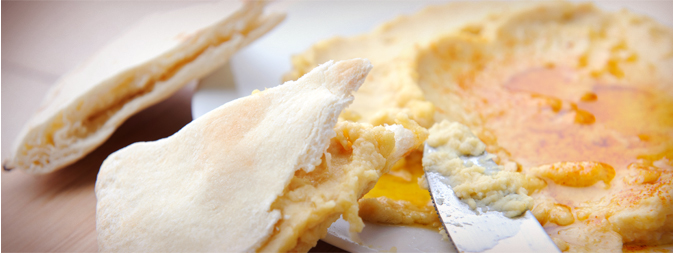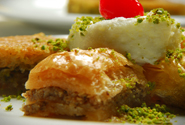mediterranean
In the images of gnarled olive trees, colorful fishing boats in turquoise harbors, warm breezes, and whitewashed terraced villages, an enchanting magic draws a historian and food traveler alike to the Mediterranean. A Mediterranean feast is not only the act of eating together with family and friends;it also refers to the experiences that enrich us whenever we touch upon Mediterranean history and life.
- Mediterranean cuisine is built around fresh, wholesome fruits, vegetables, whole grains and breads, legumes, seafood, nuts and seeds and olive oil.
- The most prevalent ingredient in the cuisines of the Mediterranean is olive oil. The pungent,sometimes bitter oil works its way into a variety of dishes, and is used both as a cooking agent and a dressing.
Much of Mediterranean cuisine is snack foods- little bites and mezzis eaten with friends. Hummus is a tasty and popular mezzi served with pita bread.
 Eastern Mediterranean Cuisine, which encompasses some Middle Eastern cuisine, describes the culinary traditions of Greece, Turkey, Syria, Lebanon, Israel, Palestine, and Egypt. Yogurt and fresh cheeseslike feta, halumi, and lebanah feature prominently. The flavors of parsley, sumac, mint, and lemon juice dominate the cooking palate, while pomegranates and nuts are regular ingredients in sauces and spreads. Grains take the form of rice or flat breads like pita.
Eastern Mediterranean Cuisine, which encompasses some Middle Eastern cuisine, describes the culinary traditions of Greece, Turkey, Syria, Lebanon, Israel, Palestine, and Egypt. Yogurt and fresh cheeseslike feta, halumi, and lebanah feature prominently. The flavors of parsley, sumac, mint, and lemon juice dominate the cooking palate, while pomegranates and nuts are regular ingredients in sauces and spreads. Grains take the form of rice or flat breads like pita.


